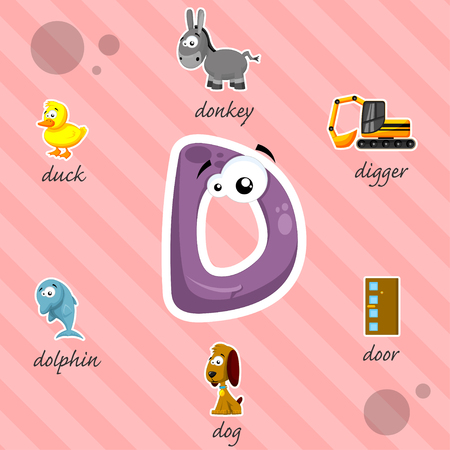1. The Basics of Canine Body Language
Dogs rely heavily on body language to communicate their emotions, needs, and intentions. Unlike humans, who use words to express themselves, dogs use a combination of posture, facial expressions, tail movements, and ear positions to convey messages. Understanding these signals is essential for building a strong and trusting relationship with your furry friend.
Why Understanding Canine Body Language Matters
Recognizing your dogs body language can help prevent misunderstandings, reduce stress, and strengthen your bond. It also allows you to respond appropriately to their emotions, whether they’re feeling happy, anxious, or fearful. By paying close attention to their signals, you can create a safe and comfortable environment for them.
Common Canine Body Language Cues
Here are some fundamental canine body language cues that can help you better understand what your dog is trying to tell you:
| Body Language Cue | What It Means |
|---|---|
| Wagging Tail | A wagging tail generally indicates excitement or happiness, but the speed and height of the wag can change its meaning. |
| Tucked Tail | A tucked tail often signals fear, anxiety, or submission. |
| Ears Perked Up | Your dog is alert and paying attention to something. |
| Pinned Back Ears | This may indicate fear, nervousness, or submission. |
| Baring Teeth or Growling | A sign of aggression or discomfort; your dog may feel threatened. |
| Bowing (Play Bow) | A clear invitation to play; your dog is feeling playful and friendly. |
The Role of Context in Dog Communication
No single body language cue should be interpreted in isolation. Its essential to consider the entire context of the situation, including your dogs overall posture, facial expressions, and the environment they are in. For example, a wagging tail does not always mean a dog is happy—it could also indicate nervousness or excitement depending on other accompanying signs.
Observing Your Dog’s Body Language Daily
The best way to become fluent in reading canine body language is through daily observation. Pay attention to how your dog reacts in different situations—when meeting new people, encountering other dogs, or during playtime. Over time, youll develop a deeper understanding of their unique ways of expressing emotions.
2. Tail Wagging: More Than Just Happiness
Many people assume that a wagging tail always means a happy dog, but in reality, tail movement and positioning can convey a wide range of emotions. Understanding these subtle differences can help you better interpret your dogs feelings and respond appropriately.
Tail Position and What It Means
A dogs tail position plays a crucial role in expressing their emotional state. Below is a breakdown of common tail positions and what they typically indicate:
| Tail Position | Possible Meaning |
|---|---|
| High and stiff | Alert, confident, possibly aggressive or dominant |
| Neutral (natural position) | Relaxed and comfortable |
| Tucked between legs | Anxiety, fear, or submission |
| Low but not tucked | Nervousness or uncertainty |
The Speed and Direction of Wagging
Apart from position, the speed and direction of tail wagging also carry important clues about how your dog feels.
The Speed of Wagging
- Fast wagging: Excitement or happiness, but it can also mean heightened arousal.
- Slow wagging: Uncertainty or cautious friendliness.
- No wagging: The dog may be tense, focused, or feeling threatened.
The Direction of Wagging
- Wagging more to the right: A positive response, such as happiness when seeing their owner.
- Wagging more to the left: A sign of stress or negative emotions.
- Circular wagging: Extreme excitement or friendliness (often seen when greeting someone they love).
Putting It All Together
If your dogs tail is high and stiff with fast wagging, they may be feeling dominant or even slightly aggressive. On the other hand, if the tail is low and wagging slowly, they could be nervous or unsure. Paying attention to context along with tail movements will help you accurately interpret what your dog is trying to communicate.

3. Ears, Eyes, and Facial Expressions
Dogs are incredibly expressive animals, and much of their communication happens through subtle changes in their ears, eyes, and facial expressions. By paying close attention to these features, you can better understand what your dog is feeling and how they perceive their surroundings.
How Dogs Use Their Ears
A dogs ears can move in different directions to convey various emotions. While some breeds have floppy ears that limit movement, most dogs still use ear position to communicate.
| Ear Position | Meaning |
|---|---|
| Forward and alert | Curiosity or excitement |
| Pinned back against the head | Fear, stress, or submission |
| Slightly pulled back but relaxed | Affection or contentment |
| Constant twitching or movement | Nervousness or uncertainty |
What Your Dog’s Eyes Reveal
The eyes are often called the “windows to the soul,” and this is especially true for dogs. Their eye shape, size, and movement can tell you a lot about their emotions.
| Eye Behavior | Meaning |
|---|---|
| Soft, relaxed eyes with slow blinking | Trust and affection |
| Wide-open eyes with dilated pupils | Fear or high alertness |
| Avoiding eye contact or looking away | Submission or discomfort |
| “Whale eye” (showing whites of the eyes) | Anxiety or stress |
| Intense staring without blinking | Dominance or a potential challenge |
Facial Expressions and Emotions
A dog’s facial muscles are highly expressive and can give insight into their mood. While some expressions may be subtle, they are key indicators of how your dog is feeling.
Relaxed and Happy Expression
A happy dog will have a slightly open mouth, possibly with a gentle tongue lolling out. Their facial muscles will be loose, and they might even appear as if theyre smiling.
Tense or Stressed Expression
If your dog’s face looks tight, with wrinkles forming around their forehead or muzzle, it could indicate stress or fear. Panting when not hot or active can also signal anxiety.
Lips and Mouth Signals
- Licking lips excessively: Stress or nervousness
- Baring teeth without growling: Discomfort or warning
- A fully bared snarl with growling: Aggression or fear-based defense
- A relaxed mouth with soft lips: Calm and at ease
By observing your dog’s ears, eyes, and facial expressions together, you can gain a deeper understanding of what they’re trying to communicate. The more you pay attention to these subtle cues, the stronger your bond with your furry friend will become.
4. Posture and Movement: Signs of Comfort or Stress
Dogs communicate a lot through their posture and movement. Understanding how your dogs stance, movement, and overall body posture can signal confidence, fear, submission, or aggression is essential for any pet owner. Paying attention to these signals can help you respond appropriately and strengthen your bond with your furry friend.
Confident and Relaxed Posture
A relaxed dog will display a loose, natural stance. Their body is neither too stiff nor too slouched. Here are some key signs of a comfortable and confident dog:
- Neutral stance: Standing evenly on all four legs without tension.
- Loose tail: The tail moves naturally or wags at a moderate pace.
- Smooth movements: Walking with a steady, balanced gait.
- Soft eyes and face: No excessive tension in the facial muscles.
Signs of Fear or Submission
A fearful or submissive dog often tries to make itself look smaller. This behavior is meant to show that they are not a threat. Look for these signs:
- Crouching or lowering the body: The dog may hunch down close to the ground.
- Tucked tail: A tail held low or tucked between the legs signals fear.
- Avoiding eye contact: Turning the head away or looking sideways.
- Slight trembling or shivering: Sometimes paired with pinned-back ears.
Aggressive or Defensive Posture
An aggressive or defensive dog will try to make itself appear larger and more intimidating. If you notice these signs, proceed with caution:
- Stiff body posture: Standing tall with tense muscles.
- Ears forward or pinned back tightly: Indicates alertness or potential aggression.
- Tense jaw and bared teeth: A warning sign before possible escalation.
- Puffed-up fur along the back (hackles raised): This happens when the dog is highly aroused or agitated.
The Role of Movement in Canine Communication
A dogs movement also provides clues about their emotional state. Below is a quick reference guide to common types of canine movement and what they might indicate:
Movement Type |
Possible Meaning |
|---|---|
| Bouncy, playful jumps | The dog is excited and inviting play. |
| Pacing back and forth | Nervousness, anxiety, or anticipation. |
| Lunging forward aggressively | A sign of dominance, frustration, or territorial behavior. |
| Cautious slow movements | The dog is unsure or feeling threatened. |
| Tense freezing in place | A warning that the dog may react aggressively if provoked further. |
The Importance of Context
No single posture or movement should be interpreted in isolation. Always consider the surrounding environment, the dogs previous experiences, and other body language cues before determining what they are trying to communicate. By learning how to read these signals correctly, you can better support your dogs emotional well-being and prevent misunderstandings that could lead to stress or conflict.
5. Common Misinterpretations and How to Respond
Understanding your dogs body language is essential for building a strong bond, but many common signals are often misinterpreted. These misunderstandings can lead to unnecessary fear, frustration, or even behavioral issues. Below, we address some of the most frequent misconceptions and how you can correctly interpret and respond to them.
Misinterpreted Signals and Their True Meanings
Dogs use a combination of body posture, facial expressions, and tail movements to communicate. However, some signals are frequently misunderstood by humans. Here’s a breakdown of common misinterpretations:
| Misinterpreted Behavior | Common Misunderstanding | What It Actually Means | How to Respond |
|---|---|---|---|
| A wagging tail | “The dog is happy.” | A wagging tail can indicate excitement, nervousness, or even aggression depending on its position and speed. | Look at the whole body language—relaxed muscles and loose posture usually indicate happiness, while stiff movements may signal tension. |
| A dog rolling over | “The dog wants belly rubs.” | This could mean submission or discomfort rather than an invitation for petting. | If the dog seems tense or avoids eye contact, give it space instead of assuming it wants affection. |
| Licking lips or yawning | “The dog is just tired or hungry.” | This is often a sign of stress or uncertainty rather than drowsiness or hunger. | If your dog does this in a new situation, try to reduce stressors and provide reassurance. |
| A stiff body with ears forward | “The dog is just curious.” | This could indicate alertness or even aggression depending on the context. | Avoid sudden movements and assess the environment to determine if your dog feels threatened. |
The Importance of Context in Canine Communication
No single body movement tells the full story of how your dog is feeling. Its crucial to assess multiple signals together. For example:
- A wagging tail with relaxed eyes and body likely indicates happiness.
- A wagging tail with a stiff stance and raised fur might signal agitation.
- Ears pinned back along with cowering suggests fear rather than friendliness.
Building a Better Connection Through Understanding
The key to strengthening your relationship with your dog is learning to read their signals accurately. By avoiding common misinterpretations and responding appropriately, you help build trust and create a safe environment for your pet. Pay attention to their full-body language rather than relying on isolated gestures, and always consider the surrounding context when interpreting their behavior.


